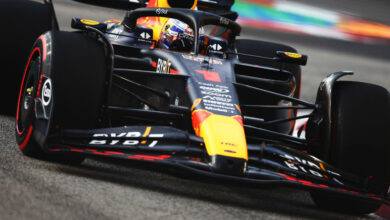Zandvoort’s Dutch Grand Prix: A Remarkable Blueprint for Environmentally-Conscious Motorsport
Embracing Sustainable Practices and Eco-Friendly Transport Amidst Protests and Controversies
Though the Dutch Grand Prix was enveloped in a mire of protests and controversies even before the commencement of the race weekend, the town of Zandvoort has astoundingly demonstrated how a Grand Prix event can be orchestrated with a near-negligible environmental footprint. This exemplar is something that other racing circuits would do well to heed, particularly in light of the climate change demonstrations that reverberated prior to both the British and Dutch Grands Prix.
When we delve into the notion of a “minimal environmental impact,” we unravel a narrative where individuals earnestly embraced the use of public transportation or opted for the eco-friendly route of traversing via bicycles – vehicles that emit no deleterious gases. The ancillary advantage of bicycles is their spatial efficiency; they occupy considerably less parking real estate than their automobile counterparts. Envision the expanse conserved when two individuals opt for bicycles instead of an oversized SUV. An illustrative snapshot, recently circulating on platform X, vividly encapsulates the Dutch sentiment towards environmental conservation. The picture exhibits the resplendent Dutch bicycle culture, with the parking expanse of Zandvoort Circuit metamorphosed into an ocean of bikes. The thoroughfares meandering towards the parking precinct are adorned with attendees who consciously chose to amble to the venue. The conspicuous absence of cars or taxis within the frame against the backdrop of an F1 circuit like Zandvoort elicits a sense of awe. The stewardship of Zandvoort Circuit’s authorities has been instrumental in fomenting this transformation, as they fervently advocated for alternative modes of transportation such as trains, buses, and bicycles, precipitating the temporary closure of public roads encircling the circuit, thereby curtailing vehicular mobility.


